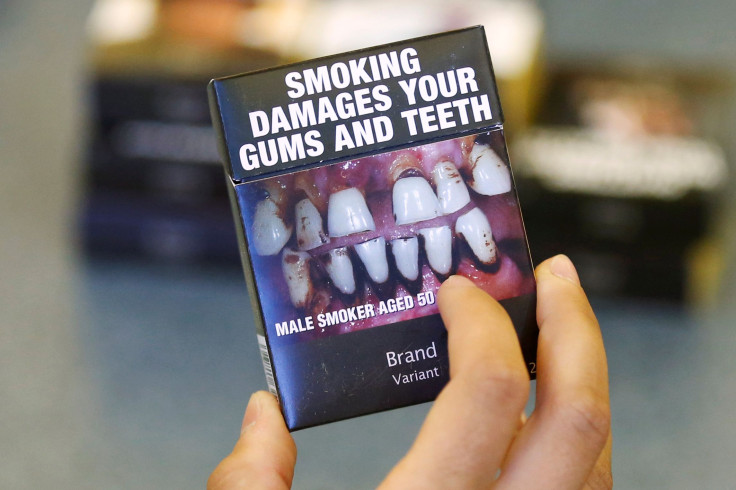Which Gets More People To Quit Smoking, Graphic Images On Cigarette Packs Or The Surgeon General's Warning?

A picture is worth a thousand words, but does a pictorial warning carry more weight than a verbal warning? When it comes to health warnings on cigarette packages, graphic images speak volumes, say University of North Carolina at Chapel Hill researchers. They found pictures illustrating the dangers of inhaling tobacco smoke were more likely to inspire smokers to attempt quitting than the familiar text-only labels.
“The current text warnings in the United States are stale and ineffective,” Noel T. Brewer told Medical Daily, explaining, “The warning content is compelling to people, but they no longer see the warnings.”
A variety of past studies demonstrate we more easily remember pictures than words, but none of us needs scientific research to gauge our deep responses to photographs. Think back, for instance, to the first time you saw certain historical images — whether the photo captured a starving child in Africa, the Holocaust, or the 1930s Dust Bowl, the power of each image was visceral and immediate, the emotional effects profound.
In 1966, the United States led the world when it first required text warnings on cigarette packs about the harms of smoking, but when other nations transitioned to graphic warnings, America did not follow suit. In fact, a 2012 tobacco industry lawsuit stalled implementation of new pictorial warnings selected and presented by the U.S. Food and Drug Administration (FDA). Specifically, the circuit court which ruled against the pictorial warnings stated the FDA had not provided evidence that ugly pictures actually reduced smoking. Though some experimental research backed up the government agency, few studies included sufficient long-term assessments of smoking behavior.
To address this gap in the research, Brewer and his coauthors conducted a large randomized clinical trial to examine the impact on smoking behavior of graphic warnings compared to text warnings.
A total of 1,901 adult smokers in California and North Carolina participated and completed the four-week trial. Each participant was randomly assigned to receive either text-only or pictorial warnings on their cigarette packs over the study period. Brewer and his colleagues prepared four pictorial warnings (that contained some text required by the Tobacco Control Act) from the FDA's originally proposed set of images. They also prepared four text-only warnings — U.S. Surgeon General statements that have been required on the side of cigarette packs since 1985.
Then, at each visit, the research staff placed the warnings on whichever cigarette packs the participants brought with them. At the start of the study and at each visit, participants filled out a survey.
Brewer and his colleagues discovered smokers whose cigarette packs had picture warnings were more likely to try to quit during the four week trial, with 40 percent of these smokers making an attempt to quit compared with 34 percent in the text-only warning group.
Importantly, 5.7 percent of smokers in the graphic warning group had quit smoking for at least a week by the end of the trial compared with 3.8 percent of smokers in the text-only group, the researchers say.
“The effects we observed appear modest, but they could have a substantial benefit across the population of U.S. smokers,” wrote the researchers. They explained how the Tips from Former Smokers campaign that features real people suffering from smoking and second-hand smoke generated an increase of just 3.7 percent in quit attempts, yet that translated to an estimated 1.64 million quit attempts and 220,000 smokers who actually quit.
The researchers theorize that the picture warnings may elicit a stronger reaction — fear, basically — and this is what motivates quitting. Either that or the warnings will simply encourage conversation, which reinforces their effect. In the end, the psychology need not be explained. If picture warnings get more people to quit, that’s enough.
Still, just like the text warnings, they, too, may have a sell-by date.
“We do not yet have well-developed science on how long it takes for people to habituate to warnings. I would speculate that the effect would likely increase over the first several months, plateau for several years and then begin to fade,” said Brewer.
Source: Brewer NT, Hall MG, Noar SM, et al. Effect of Pictorial Cigarette Pack Warnings on Changes in Smoking Behavior A Randomized Clinical Trial. JAMA Internal Medicine. 2016.



























